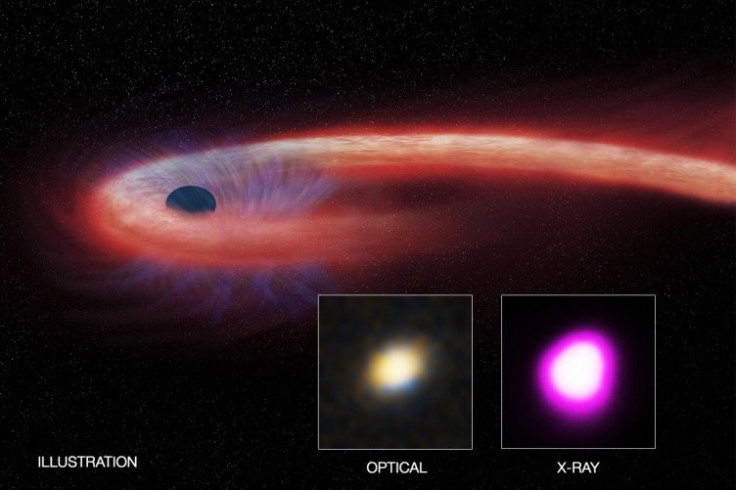Supermassive Black Hole Ate A Dying Star For Over A Decade In The Longest Tidal Disruption Event Observed

When it comes to abject and complete destruction, few things can compare to the impact black holes have on objects unfortunate enough to come within their reach. Those objects can be spacecraft, planets or even stars; the black hole will treat them all the same way — ripping them apart.
When a supermassive black hole does exactly that to a star — sphagettifying the burning ball of gas into shreds and devouring it as it comes too close to the black hole’s event horizon — the phenomenon is called a tidal disruption event. Numerous instances of TDE have been observed in the past, distinguished by multi-wavelength X-ray flares that are produced as the stellar material falls into the black hole and gets heated up.
Most TDEs last about a year, with the flare becoming very faint over time. But in a paper published Monday in the journal Nature Astronomy, researchers have described a TDE that is over 10 times longer in duration than previous observations. A supermassive black hole, called XJ1500+0154 and situated in the nucleus of a dwarf starburst galaxy about 1.8 billion light-years away, has been feasting on a star for over 11 years.
“We have witnessed a star’s spectacular and prolonged demise. Dozens of these so-called tidal disruption events have been detected since the 1990s, but none that remained bright for nearly as long as this one,” Dacheng Lin, a research scientist at the University of North Hampshire and the lead author of the paper, said in a statement.
The international team of researchers used data from three orbiting X-ray telescopes — NASA’s Chandra X-ray Observatory and Swift Satellite as well as the European Space Agency’s XMM-Newton.
Based on their observations, they concluded that this TDE either tore apart the most massive star ever to be a part of one of these events, or it was the first time that a small star was completely consumed in a TDE. Usually, at least some stellar debris is flung outward from the black hole at very high speeds during a TDE.
The researchers predict the stellar feeding supply to the black hole would be significantly reduced in the next 10 years, and that the flare from the TDE will begin to fade over the following several years.
The observations also showed that radiation from the black hole was consistently near or above the Eddington limit, the point of balance between the force of outward radiation from the hot gases inside and the gravitation force acting inward. This could potentially explain how supermassive black holes attained masses of a billion times the sun in the early days of the universe, when it was just about one billion years old.
© Copyright IBTimes 2024. All rights reserved.





















